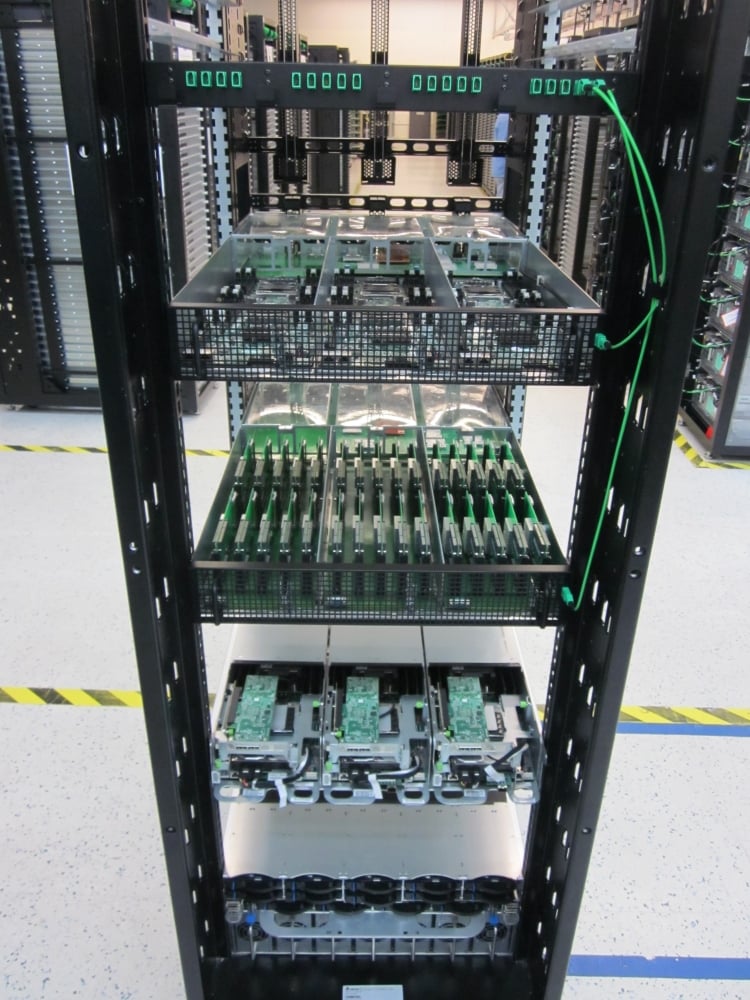Password Security: How Good is Good Enough?
January 21, 2013
Microsoft Surface Pro: Bigger and Better
January 22, 2013Update: Last week, the most prominent server component manufactures converged upon the fourth annual Open Compute Summit. Intel introduced its latest OCP compliant rack which is designed to support the use of silicon photonic technology. This ultra-low latency design will increase the lifespan of a server rack.
Update: Last week, the most prominent server component manufactures converged upon the fourth annual Open Compute Summit. Intel introduced its latest OCP compliant rack which is designed to support the use of silicon photonic technology.
This ultra-low latency design will increase the lifespan of a server rack by allowing components to be spaced out independently across a mother board. Intel hopes that by doing so, clients will be able to customize and upgrade their servers as they see fit.
Photonic Cells To The Rescue
Using reflective cells to transfer data across fiber optics rather than the traditional copper wire found in todays servers. What that allows for are components to be spread out farther apart from the mother board yet still maintain lightening fast computing speed.
If components aren’t located atop of each other they can be changed out periodically during the servers lifespan – eliminating the need to upgrade prematurely. Intel predicts that a subscription-based model could be adopted by the retail data center industry. It’s all about scalability and being able to keep up with tomorrows computing and networking demands. Here’s a look at Intel’s OCP compliant server rack, which makes use of silicon photonic and independently placed component design:
Original Post Below
18 months ago, a small team of Facebook engineers founded the Open Compute Project. The goal was to design the most economical and efficient computing infrastructure possible.
The results are astonishing. Not only has this small team of engineers been able to bring such a plan to fruition, they’ve also grown the project beyond themselves and created a movement in the process.
Open Compute Project aims to spark a creative dialogue between data center professionals, hardware and software engineers alike. The fourth OCP Summit wraps up today and has already gained impressive traction as well as support from companies like Intel, AMD, Hyve Solutions, Calxeda and of course Facebook.
Innovative Products Coming Soon
A perfect example of OCP’s innovation as applied to a real world environment, would be Facebook’s Prineville Oregon data center. Intel is also contributing designs in the form of Silicon Photonics, which will enable 100Gbps interconnects and increased bandwidth to support future server densities and requirements.
Open Source Hardware Adoption
OCP is influencing companies to design and adapt specific open source designs to attain greater flexibility and efficiency within their own networking environments. These ideas pay off for companies like Riot Games, an online PC game developer who seeks to provide a fast and responsive environment for their players. OCP approved solutions help companies eliminate inefficient hardware components so they can focus their dollars on the areas that matter most: performance and reliability.
A Step In The Right Director
For the members of OCP there is still much work to be done. Though by joining the ranks of other groups like The Green Grid and Schnieder Electric’s Genome Project, OCP can and will accomplish many goals so long as industry professionals continue to work together. OCP summit wraps up today in Santa Clara California. For a list of keynote speakers click here. Did your company attend the OCP summit? If so, feel free to share with us what you learned concerning data center efficiency and design.



